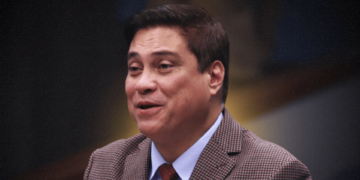Two events exposed the fragility of human control. Sunjay Kapur, a 53-year-old Indian billionaire and chairman of Sona Comstar, died during a polo match in Windsor, England, after a bee triggered anaphylactic shock and a fatal heart attack.
Hours earlier, he had expressed condolences on X for an Air India crash in Ahmedabad. Meanwhile, Vishwash Kumar Ramesh, a 40-year-old middle-class passenger, emerged as the sole survivor of that crash, which killed 241 others. His seat, 11A, near an emergency exit, allowed him to escape the wreckage.
Kapur’s $1.2 billion fortune, elite connections, and physical prowess couldn’t save him from a bee’s sting. Anaphylaxis, a rapid allergic reaction, overwhelms the body, constricting airways and dropping blood pressure.
Without immediate epinephrine, survival is a gamble. Kapur, vibrant one moment, was gone the next, despite his privileged life among royalty and exclusive clubs.
Ramesh, an ordinary traveler in economy class, survived not through skill or wealth but sheer luck. The Air India flight crashed shortly after takeoff, one of the deadliest aviation disasters since 2014.

Seated by an exit, Ramesh escaped through a broken door amid flames. His survival hinged on a random seat assignment, while others, perhaps wealthier or fitter, perished.
These stories dismantle the myth that money or health guarantees safety. Kapur’s wealth couldn’t stop a biological fluke; Ramesh’s lack of it didn’t doom him. A bee or a seat number can upend our illusions of control. We chase fitness or status, believing they shield us, but nature is indifferent.
Media coverage highlighted a stark contrast. Kapur’s death dominated headlines, framed as a tragedy of a billionaire struck down in his prime, with outlets like fancy magazines detailing his playboy past and royal ties.
Ramesh’s survival, however, was a footnote—a brief mention in dailies, a nod to his “miracle” escape. The elite’s downfall captivates; an ordinary man’s luck fades quickly. This reveals our bias: we expect wealth to confer invincibility, so its failure is a spectacle, while a survivor’s luck is mundane.

Kapur’s death raises questions about medical preparedness. Anaphylaxis kills in minutes, yet many outdoor venues, like polo fields, lack epinephrine or trained staff. The Mayo Clinic notes insect stings are common triggers, urging better protocols.
Ramesh’s survival underscores aviation safety gaps. Studies from the National Transportation Safety Board show exit-row proximity boosts survival odds, yet airlines don’t prioritize this in seat assignments. Mandating briefings for exit-row passengers or highlighting survival odds could save lives.
These events are a cultural wake-up call. We idolize control—building empires, sculpting bodies—yet fate is random. A billionaire falls to a bee; a nobody survives a fiery crash.
The Peanut Gallery Media Network thrives on exposing such truths: we’re all one bad break or lucky seat from a different outcome. Clinging to myths of invulnerability is futile. Life is a dice roll, and we’re all hoping for seat 11A when it counts.












